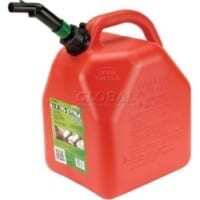
From hurricanes to blizzards, the Mid-Atlantic region is known for its weather extremes. Whether you are storing fuel for a generator or keeping a small reserve for your family vehicle, Tevis Energy offers the fuel storage safety tips below to keep you and your family safe! Additionally, if your property is in an area that is prone to flooding, we strongly advise that all stationary fuel tanks be securely attached to a fixed object.
Fuel Storage Safety Tips:
- Use only OSHA approved metal or plastic gasoline containers.
- Remove fuel containers from vehicles and place them on the ground before refilling.
- Fill containers slowly to reduce the buildup of static electricity.
- Never overfill the container.
- Secure the container for transportation to avoid spills.
- Transport in ventilated areas of the vehicles, never in a trunk or other closed area.
- Do not store containers in a vehicle or a living space.
- Store containers in a well-ventilated area.
- Keep containers away from flames, pilot lights, stoves, heaters, electric motors and other sources of ignition. Vapors can be ignited by a spark or flame source many feet away.
- Keep containers closed.
- Don’t smoke near gas containers.
- Keep containers out of reach of children.
- If you run out of gas while working, move the device to a shady spot and let it cool for at least 10 minutes — until it’s no longer warm to the touch — before refueling.
- When filling the device, fill it on a paved surface in case of spills. Gasoline kills vegetation and renders soil lifeless for weeks or months.
- Avoid prolonged breathing of vapors.
- Do not siphon gasoline by mouth.
- If swallowed, do not induce vomiting; call a physician immediately.
Source: Dwight Barnett, certified master inspector with the American Society of Home Inspectors.
